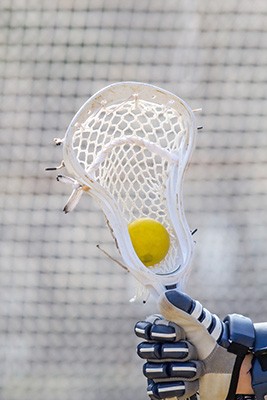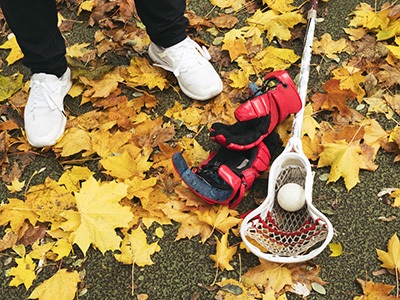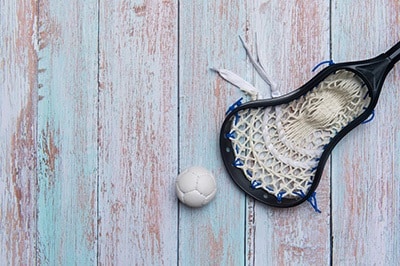Are you keen on becoming the best lacrosse player in 2023? Knowing all about your gear, especially the most important elements, such as a lacrosse pocket, is essential for excellence.
In this post, we'll discuss what a lacrosse pocket is and why it's vital to have one set up correctly. We'll also provide an extensive guide of top tips that avid lacrosse players should take into account when setting up their pockets!
So read on and get ready to become the best at the sport - because mastery comes with knowledge!
More...
Take Away Key Points:
If you want to expand your knowledge about lacrosse pockets, refer to the guide below. You will find various interesting facts and get to know the gear better.
What is a lacrosse pocket?
A lacrosse pocket refers to the stringing fastened to the plastic of a lacrosse head. It's a place where the lacrosse ball sits within the lacrosse stick. That's why it's called a pocket.
The method you string a lacrosse pocket determines a player's throwing accuracy. It also affects the speed as the ball releases when throwing.
Types of lacrosse pockets
Lacrosse pockets are determined based on where the deepest point of the pocket is. Unfortunately, it's impossible to string a pocket offering equal strength in all its parts.
Thus, lacrosse players must prioritize specific stringing elements over others. As a result, they will get the best pocket to match their playing style and game.
Below you can find additional information about the pocket types.
1. Low pocket

The low pocket is placed in the lower third of the lacrosse head. The low pocket best works with a head flaring out below the midline of the head.
The low pocket is a favorite of attackers. The main reason for this is the fact that it's the most supportive of the one-handed cradle. Attackers must turn to one-handed cradling primarily to evade and secure more scoring points.
However, the low pocket may have a low whip, which results in decreased shot power. However, this is not important to attackers, as low pockets serve only as their support, although lacrosse players like the speed and an extra couple of mph when shooting.
- Supports one-handed cradle
- Eases if stringing a defined channel
- Throwing passes on the line
- Slow throwing release
- Decreased shot power
- Harder to scoop up ground balls
2. Mid pocket
The mid pocket refers to the middle position of the lacrosse head, as the very name suggests. The mid pocket is an all-around pocket performing well in all areas. The mid pocket does it all - from scooping ground balls to passing, catching, etc.
The only disadvantage the mid pocket offers is that the pocket can't be used for shooting. Attackers cannot rely too much on the mid pocket, and the same rule applies to the on-the-go playmaker of offense.
However, the mid pocket is an excellent choice for players wanting to have the tools necessary for all tasks on the lacrosse field.
- Moderately good at all tasks
- Failing to excel in only one area
3. High pocket
The high pocket is placed in the upper third of the lacrosse head. The high pocket is the most challenging pocket to string.
Typically, offensive midfielders like the high pocket the most. The high pocket offers maximum shooting power. This is something that offensive midfielders require in their lacrosse sticks.
Most of their shots come from the alley (about eight to ten yards out from the cage), so these players need the high pocket for increased speed and longer distances. In addition, their shot must sneak the ball past the goalie, and the high pocket is an excellent tool to achieve this.
The main issue with the high pocket refers to its inability for one-handed cradle actions. Still, this is not so critical for the career of midfielders, as there are not too many chances to perform one-hand cradling in the play. They play against the shot-stick defensemen most of the time.
- Ease of picking ground balls
- Quick release of throwing
- Increased shot power
- Cannot perform one-hand cradling
- Harder to throw passes with a zip
- Difficulties to string a solid channel
4. Traditional pocket

Traditional pockets do not fit into the standard categorization of lacrosse pockets, and they are an exception.
Traditional pockets are entirely handcrafted with nylon threads, cross laces, and leather. As a result, these lacrosse pockets differ from those with mesh.
Such a pocket was popular back in the days of lacrosse, beginning when mesh had not yet been invented.
The pocket looked similar to this: the cross lace and leather structure make rudimentary diamonds up and down the pocket. This was the main inspiration for the modern version of the lacrosse pocket that we know today.
How to string lacrosse pockets?
There are countless methods of stringing a lacrosse stick, that is, a pocket.
However, we will present some universal methods to help you create the most effective pocket for your play.
Step 1: Gather your materials
Stringing low lacrosse pockets or mid pockets requires versatile tools to help you string the pocket correctly. The same goes for stringing a high lacrosse pocket.
You will need a bunch of tools to get a fully strung pocket eventually. These include:
- unstrung lacrosse head
- mesh
- 22-24 inches of the top string
- 22-24 inches of sidewall strings
- 6-7-8 inches of the bottom string
- shooting string
- scissors
- lighter
- pliers (optional)
Step 2: Stretch the mesh and string the top
When you first open up the mesh package, you will find it neatly scrunched up. You must stretch the mesh out before you set off on the quest for the perfect lacrosse pocket. Do not forget to stretch the mesh to avoid further complications in the procedure.
Then, decide whether you will string your low pocket, mid or high pocket with a nine-diamond top string or a ten-diamond top string. Both are entirely legal and effective at devising a reliable pocket.
For the nine-diamond mesh stringing, the top string is strung so that the mesh is symmetrical. However, if you miss out on a hole or a step, you will have to take the course of stringing from the beginning.
Step 3: String the sidewall strings with the knot pattern
The next step is to string the two sidewalls. This is the most vital part of stringing the pocket.
The knot pattern used on the sidewall strings is the primary method that constructs the pocket. There are multiple knots that stringers use in making an effective pocket. Examples of these different kinds of knots include the following:
- Interlock (I)
- Special Interlock (SI)
- 1, 2, 3 Knots
Where and when players use these plays a fine tune in how your pocket will turn out. Learning how to implement a knot pattern resulting in a solid pocket requires much time.
If you're a beginner (a kid, for example), you can watch various videos, learn different stringing features, and create more room for your techniques. It will take you less time to string the heads and pockets next time you need to.
Step 4: Secure the bottom string
The bottom string secures the mesh's bottom to the lacrosse heads. The bottom string is not anything pompous on the lacrosse stick. Its primary purpose is to keep the ball from flying out of its room once it's inside the pocket.
In addition, ensure the bottom string is tight enough, as it will directly impact the depth of your lacrosse stick and pocket.
Step 5: Adding shooting strings to your lacrosse stick
Shooting strings are optional on a stick; however various experts recommend adding them. How many shooting strings are strung also depends on the player. However, you must ensure the shooting strings are strung properly.
They should be placed straight across the mesh diamond row, four inches from the top of the head of the stick. If not, your pocket and stick won't be legal.
Typically, shooting strings pulled tighter and placed lower on the head result in a greater amount of whip.
Step 6: Cutting and burning the excess string
Once you're done with stringing mid, low, or high pockets, you can cut and burn the excess string to make the perfect pocket.
Also, burning the ends of the string will result in prevention from fraying.
Extra lacrosse pocket tips: Know if your pocket is illegal
There are several rules to follow before you string your pocket. Otherwise, you will be in an awkward position.
The players must follow the standards for a T, or they can end up with a penalty.

Frequently Asked Questions
What does a high pocket do in lacrosse?
Some attackers and offensive middies typically use high pockets. The ball stays high and nice on the stick. So, the ball will be ready for a quick feed to the crease or a quick step-down shot.
High pockets are also excellent for players wanting the ball in their stick shortly.
What is the most accurate lacrosse pocket?
The most accurate lacrosse pocket is the low pocket, as it allows maximum ball control and protection. You can also perform one-hand cradling.
How deep can a women's lacrosse pocket be?
The pocket should not be deeper than one ball. Any gap between the pocket and the ball will make the pocket illegal.
How to tighten/loosen the lacrosse pocket?
There are five main methods to loosen your pocket:
- Loosen the bottom string.
- Soak the pocket in warm water.
- Break in the pocket with a wall ball.
- Use a pocket pounder.
- Restring the sidewall pattern.
What is the best lacrosse pocket for attack?
The best lacrosse pocket for the attack is the mid pocket. All players can use it and perform various operations with it.
What is a hidden pocket called?
The hidden pocket is called the deep pocket or traditional pocket. It offers enhanced control and accuracy when performing lacrosse actions.
Summary
In conclusion, each type of lacrosse pocket offers advantages and disadvantages that you should consider when selecting one for your gameplay.
Depending on your level of experience or skill set, certain pockets may serve as better alternatives, and others may not suit you.
Experimenting with different types to find one that is most suitable for your style is key in polishing your game.
Everyone has their preference, so no matter what choice you make, be true to yourself and trust in your decision.
Lastly, remember to keep a good grip on your stick and enjoy the game!

Freddy is the heart and soul of Lacrosse Runner. As a former athlete, Freddy is very passionate about Lacrosse. He keeps up with the sport’s changes and innovations and often tests the new equipment released by the leading manufacturers. Read more here
